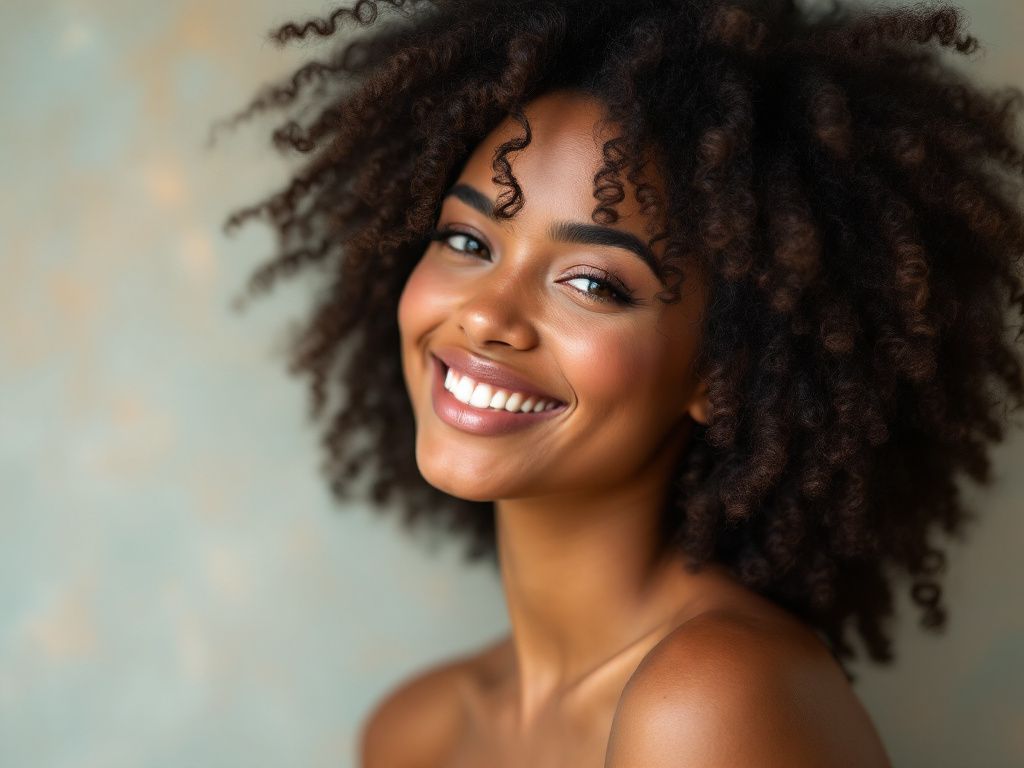
In the world of countless beauty standards and glorified hair textures, many individuals find themselves ensnared in a battle between self-love and societal ideals. This battle for me revolved around my 2B hair—waves that I once hated but have now come to embrace with all my heart. Through my journey, I’ve learned how to overcome hair insecurity and the texture shame that often accompanied it, finding confidence and self-acceptance along the way. Let’s delve into how I transformed this fraught relationship into one of peace, supported by research and practical advice.
Understanding Hair Types: The Science Behind 2B Hair
Curly hair is categorized using a typing system, most widely known as the Andre Walker Hair Typing System. This system categorizes hair into four main types: straight, wavy, curly, and kinky, each carrying further sub-classifications ranging from A to C.
**2B hair,** nestled within the wavy category, has characteristics that set it apart: it forms relatively defined ‘S’ shaped waves that tend to be frizzier, especially during humid conditions, and lack the spring of looser or tighter curls. The diameter of 2B hair generally leans towards a medium-to-thick texture. 🌊
Challenges of Living with 2B Hair:
- Frizz Factor: Due to the open wave pattern, natural moisture escapes and humidity enters, making it prone to poofiness.
- Volume Control: Not quite curly and not quite straight, 2B hair often struggles with flatness at the roots and unnecessary volume at the ends.
- Product Build-up: The quest for the right product can lead to unfortunate build-up, weighing down those natural waves.
These characteristics can often lead to feelings insecurity, causing one to despise their natural texture.
Overcoming Texture Shame: A Journey to Self-Acceptance

Texture shame is typically linked with societal beauty standards that once heavily favored straight hair. This preference, deeply rooted in Eurocentric beauty ideals, permeates media and fashion. According to a study by the Perception Institute, women with textured hair often face societal bias, with almost 20% reporting a reduction in confidence due to hair-related issues.
Pathways to Acceptance
- Educate Yourself:
- Understanding the uniqueness and public bias against certain hair types can be enlightening. For example, realizing that naturals often face disparagement despite their stunning diversity was a powerful revelation for me.
- Experimentation:
- Trial and error became my method to factual understanding—evaluating products and styles. This included exploring ingredients scientifically proven to benefit 2B hair, like aloe vera and jojoba oil, known for their hydrating but non-weighing properties.
- Community Support:
- Engaging with curly and wavy hair communities, which have burgeoned across social media, provides experiential learning. Sharing experiences diminishes feelings of isolation.
Confidence Building Through Practical Hair Care
Establishing a Routine
Developing a focused hair care routine was pivotal. After testing various strategies, I adhered to industry-backed practices sustained by peer-reviewed findings.
- Pre-wash Treatment: Research suggests coconut oil penetrates hair shafts (Journal of Cosmetic Science, 2003), reducing protein loss for healthier waves.
- Cleansing: Shampoos devoid of sulfates to protect natural waves while avoiding excess washing preserve hair integrity.
- Conditioning: Using hydrating conditioners but being mindful of silicones like dimethicone that block moisture absorption into your waves.
Styling and Maintenance Tips

Through trial and description experiments emerged techniques that made a measurable difference:
- Plopping: By using T-shirts instead of traditional towels to dry hair, needless friction is reduced, therefore limiting frizz—an essential technique for texture emboldening.
- Diffusing: Opt for a diffuser attachment to promote curl formation and enhance natural volume, aligning practical use with published advice endorsing heat protection (Journal of Dermatology).
Little rituals like these helped transform my outlook on my hair from something to control into something to care for and enjoy.
Real-World Scenarios: Embracing and Enhancing the 2B Waves
My pivotal growth arrived when I implemented scientifically backed methodologies to maintain my hair’s health and put knowledge into practice, juxtaposed against my life backdrop.
Case Study: The Big Event Dilemma
Faced with the necessity to look presentable at a corporate gala, my brushes with flat irons felt outdated. Instead, I explored styling methods that accentuate rather than suppress my natural texture:
- Developing a Heatless Look: Using foam rollers overnight resulted in a sleek finish that resonated positively in both volume and visual texture.
- Day-Old Waves Revealed: Utilizing dry shampoo prolongs style assurance, adding grip capable of holding up against environmental stresses.
A Professional’s Perspective: Industry Standards and Recommendations

From functional perspectives to embrace 2B hair fully, exploring databases like ‘NaturallyCurly’ verified best practices from stylists focusing on varying curl patterns:
Consensus on Techniques
- Moisture Focused: Utilizing glycerin, a humectant science supports for consistent moisture maintenance.
- Volume Regulation: Incorporating layering cuts promotes curl definition and wave support structurally.
Such standards platform efficacious approaches prevalent among hair care professionals, enabling me to align personal convictions with industry insights.
Conclusion: My Peaceful Alliance With 2B Waves
Witnessing how experimental routines, acceptance journeys, and authoritative insights dovetail revitalized my relationship with 2B hair, courageously empowering other wavy-haired individuals. Confidence for me is no longer founded on suppression but on the vibrant capability inherent in embracing wave patterns openly, confidently exceeding texture criticisms.
This odyssey taught patience and creativity while facilitating a unique breed of enduring confidence not exclusive to appearance but to deeper self-respect—attaining personal empowerment and igniting positive ripples across each hand-touched, lovingly styled wave. Be they metaphorical instructions or firsthand proven vocational ethos, each element finds homage in a greater understanding cherished and constructed in enhancing natural beauty.
Embark upon harnessing your waves, leading from informed love and vibrant dreams, reaching optimistically towards hair texture restoration and interpersonal admiration across diverse textures. Endless learning means waveholding intolerance begins within, encouraged purpose underscored across your living strands. 🌊
Frequently Asked Questions
What are the benefits of using a hair mask in my hair care routine?
Using a hair mask can provide several benefits, including hydration, smoothing, strengthening, curl definition, heat protection, and damage repair. Hair masks infuse the hair with moisture, help coat the hair shaft to seal split ends, reduce breakage, and protect the hair from heat styling and environmental damage[1][4].
What ingredients should I look for in a hair mask?
Effective hair masks often include ingredients such as coconut oil, argan oil, shea butter, honey, avocado oil, green tea, and coconut water. These ingredients provide nourishment, moisturize, and protect the hair, offering benefits like softening, moisturizing, and protecting against damage[2][5].
How often should I use a hair mask in my routine?
You should use a hair mask whenever your hair feels dry, unmanageable, or in need of intense hydration. This can vary depending on your hair type and needs, but generally, using a hair mask once or twice a week can help maintain healthy and moisturized hair[1][4].
How do I apply a hair mask for the best results?
To apply a hair mask effectively, shampoo your hair first, then apply the mask, focusing especially on the ends where hair tends to be the most damaged. Leave the mask on for anywhere from 10 minutes to overnight, depending on the type of mask and your hair’s needs[1][4].
References


Leave a Reply